
November 2024: A temporary bridge allowing pedestrian access along the east side of Tonnelle Avenue is installed and opened to the public. 
November 2024: To date, construction workers have driven 100 of the king piles seen here to build the cofferdam for the Hudson River Ground Stabilization Project. 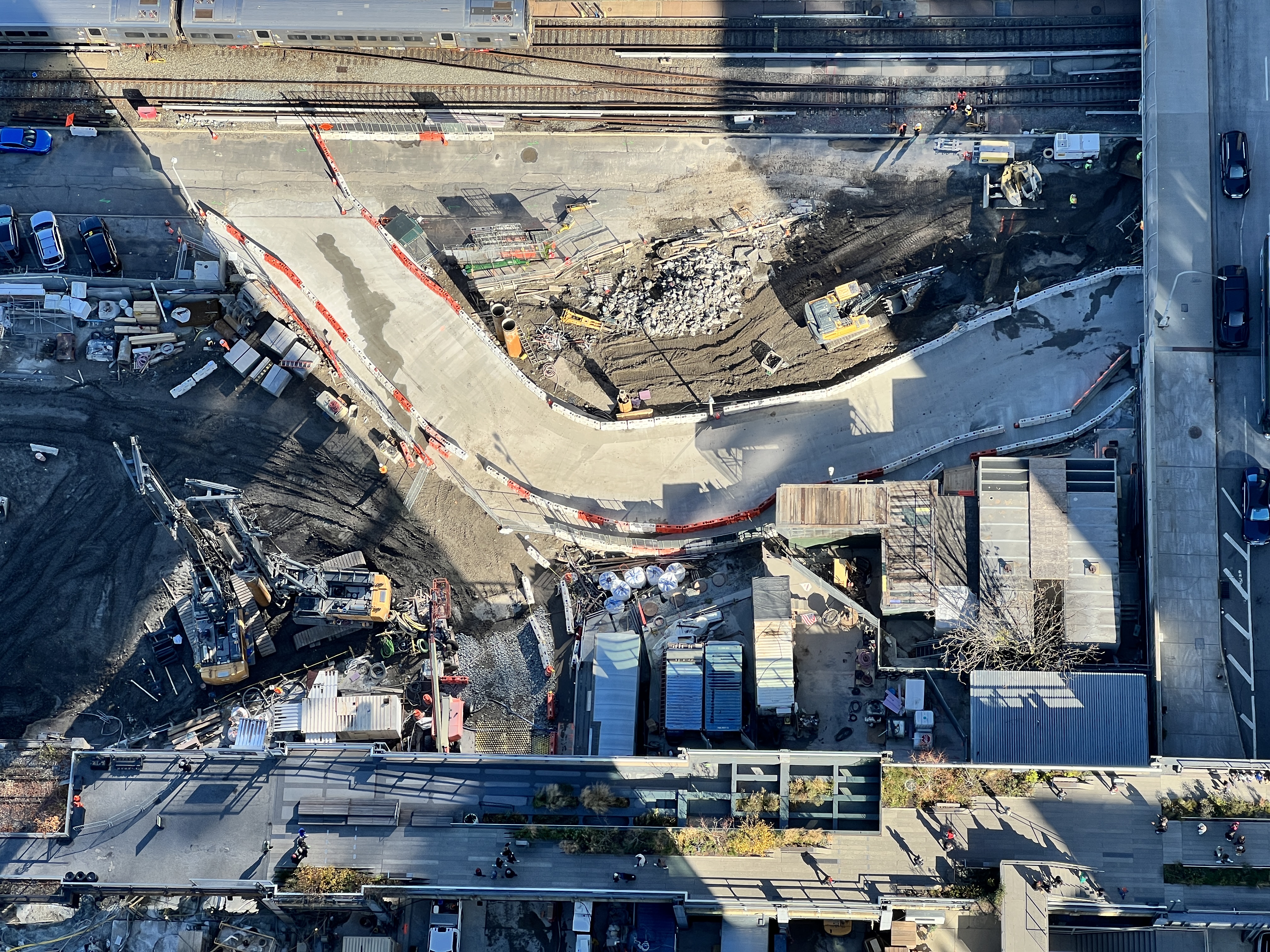
November 2024: Secant pile installation on Manhattan’s west side is nearly complete. Next, workers will excavate and install the box tunnel. 
October 2024: Construction workers on the beams with fortified bars for the concrete deck at Tonnelle Avenue. 
October 2024: Now that the first cofferdam is complete, deep soil mixing to stabilize the riverbed can begin. 
October 2024: Building a tunnel in New York City requires maneuvering in tight construction spaces. This is one of the challenges at the Hudson Yards Concrete Casing – Section 3 site. 
September 2024: Pumps pouring concrete to form the abutments for the new roadway bridge at Tonnelle Avenue. 
September 2024: An acoustic corer using sound waves to detect obstructions 60 feet below the riverbed. 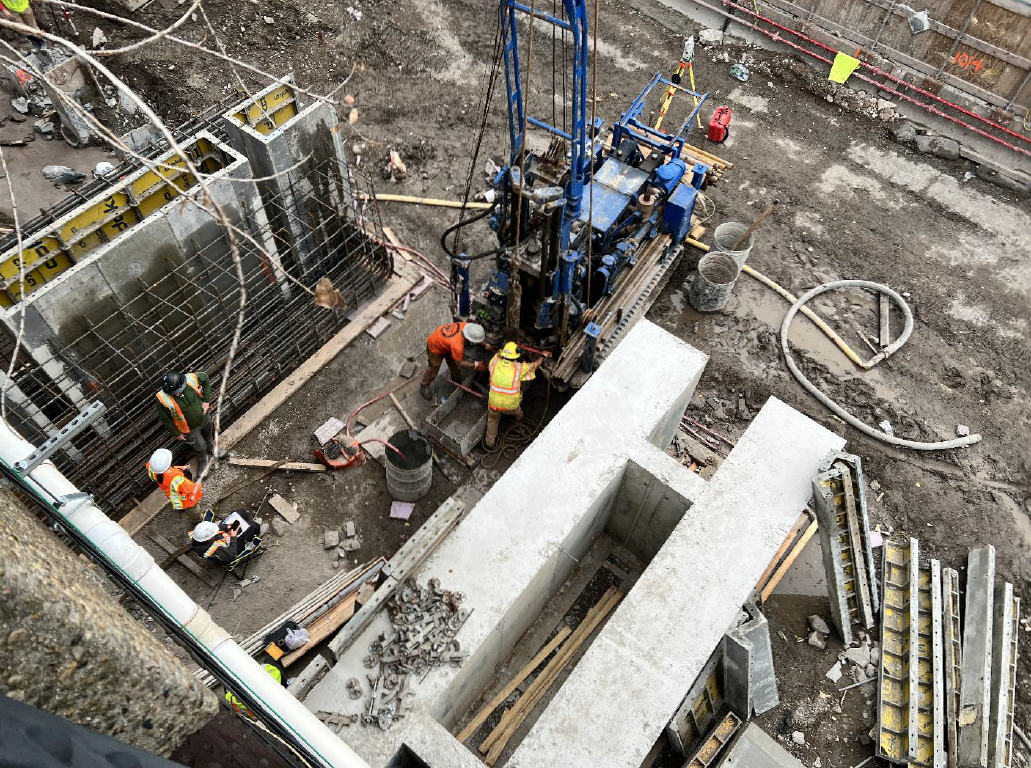
September 2024: Construction workers underpinning the High Line. 
August 2024: Shoring work on the eastern side of the Tonnelle Avenue site. 
August 2024: King pile driving for the Hudson River Ground Stabilization Project, looking east toward Manhattan. 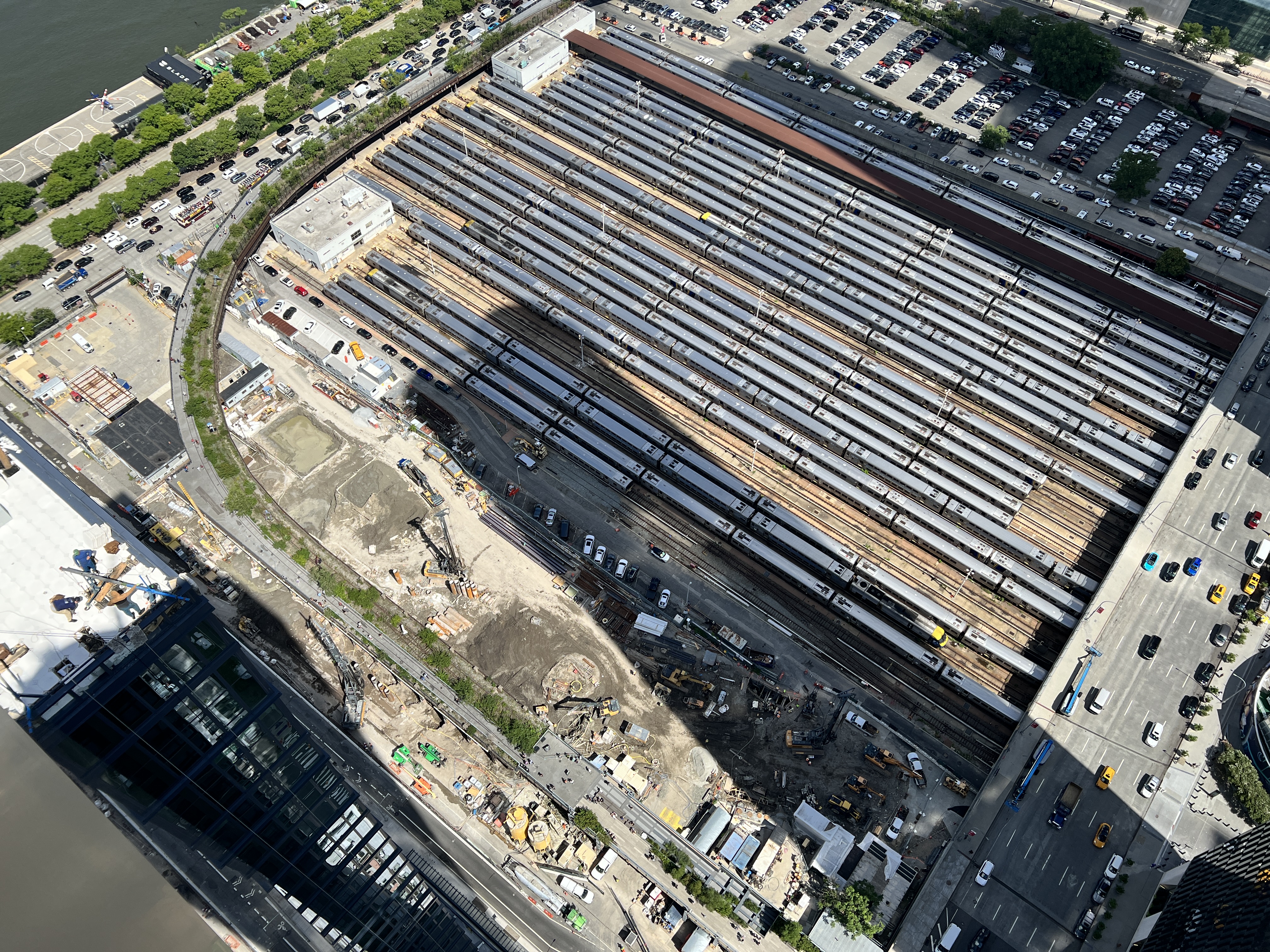
August 2024: At the Hudson Yards Concrete Casing – Section 3 site, the LIRR utility building is demolished and relocated to make way for the new tunnel, a major construction milestone. 
July 2024: Signing ceremony at Block 675 for a Full Funding Grant Agreement (FFGA) with the Federal Transit Administration (FTA), locking in $6.88 billion in Capital Investment Grant (CIG) funding and the full $16 billion needed to complete the HTP. 
July 2024: Signing ceremony at Block 675 for an FFGA with FTA. 
July 2024: Transportation Deputy Secretary Polly Trottenberg, FTA Acting Administrator Veronica Vanterpool, and FTA Administrator Amit Bose visiting the Tonnelle Avenue construction site. 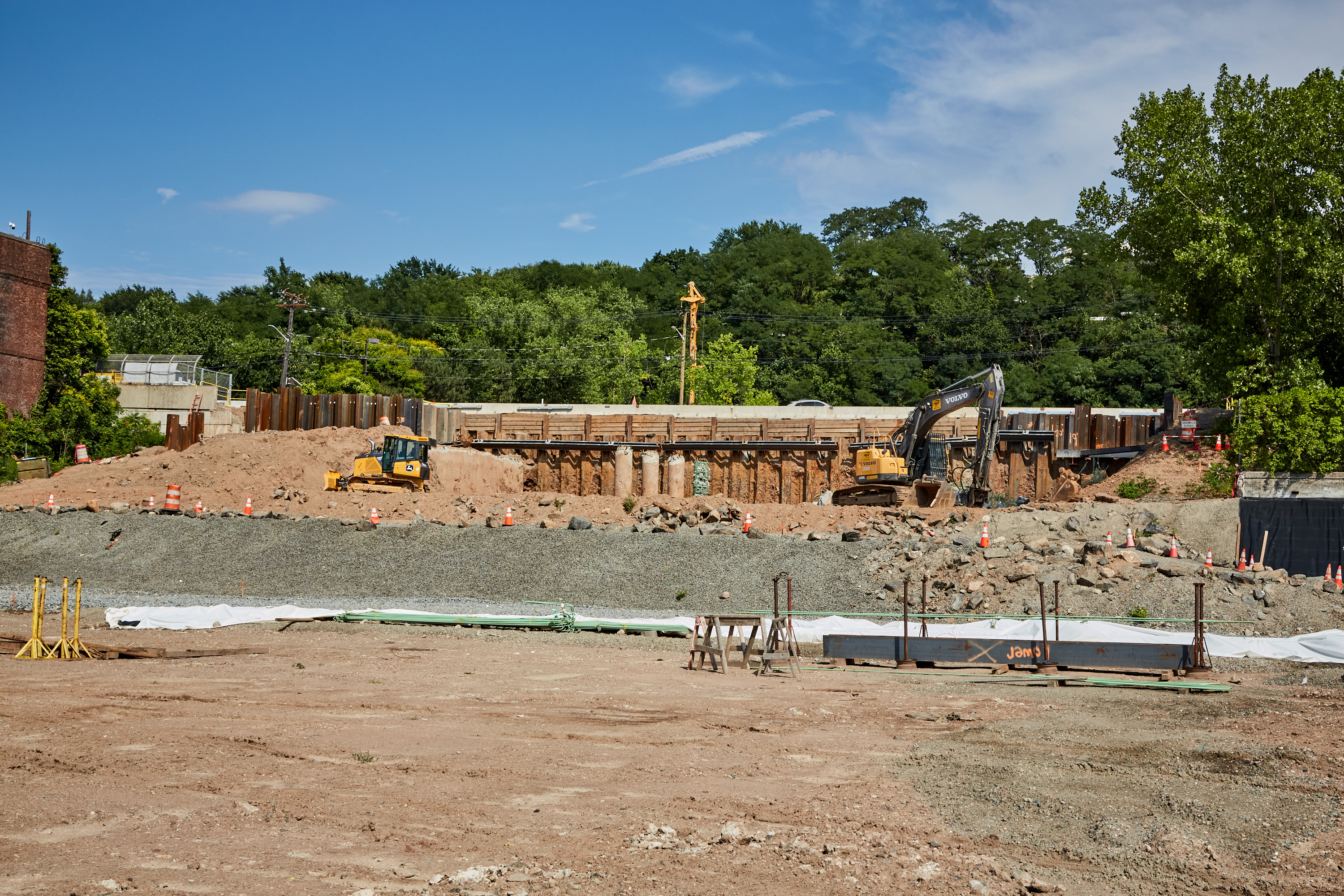
July 2024: On the western side of the Tonnelle Avenue site, workers install ties and walers behind the concrete abutments. 
July 2024: Large floating construction barges in the river to allow for in-water work on the Hudson River Ground Stabilization Project. 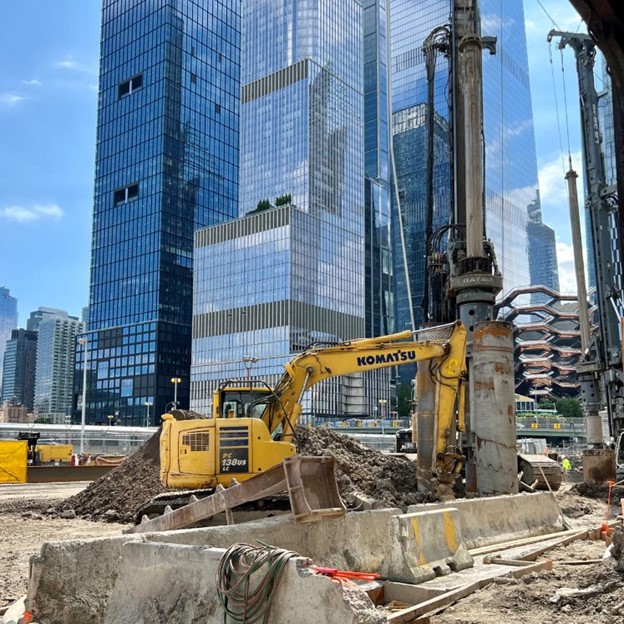
July 2024: At the Hudson Yards Concrete Casing – Section 3 site, work is underway on soil excavation, geotechnical soil borings and rock coring, and more. 
June 2024: Work to install permanent sheeting that supports the right-of-way walls at the Tonnelle Avenue site is nearing completion. 
June 2024: From a barge in the Hudson River, surveying and sampling in progress on the Hudson River Ground Stabilization Project. 
June 2024: An aerial view of the Hudson Yards Concrete Casing – Section 3 site shows the alignment of the new tunnel on Manhattan’s west side. 
May 2024: Ongoing excavation and demolition of existing structures at the Tonnelle Avenue site. The concrete will later be tested to determine if it can be reused. 
May 2024: A floating crane positioned at the Hudson River Ground Stabilization site to perform geophysical surveying. 
May 2024: FTA Region 2 visiting the Hudson Yards Concrete Casing – Section 3 (HYCC-3) construction site. 
January 2024: GDC staff delivering a Hudson Tunnel Project presentation to representatives from DBE firms at our 9th industry outreach event. 
November 2023: Breaking ground on the Tonnelle Avenue Bridge and Utility Relocation Project. This is the Hudson Tunnel Project’s first construction site in New Jersey. 
November 2023: Tonnelle Avenue groundbreaking 
November 2023: Launching work on the Hudson Yards Concrete Casing – Section 3 (HYCC-3), the Hudson Tunnel Project’s first construction site in New York. 
November 2023: Launching work on HYCC-3. 
January 2023: President Biden announcing $292 million Mega grant for work on the Hudson Yards Concrete Casing – Section 3 (HYCC-3) in New York City. 
October 2023: Artist Marisa Morán Jahn’s Re/Connections, a large-scale public art installation from Art at Amtrak, wrapping the fence that borders a future construction site of the new tunnel along the West Side Highway in Manhattan. 
October 2023: Our fence wrap installation with Art at Amtrak in Manhattan. 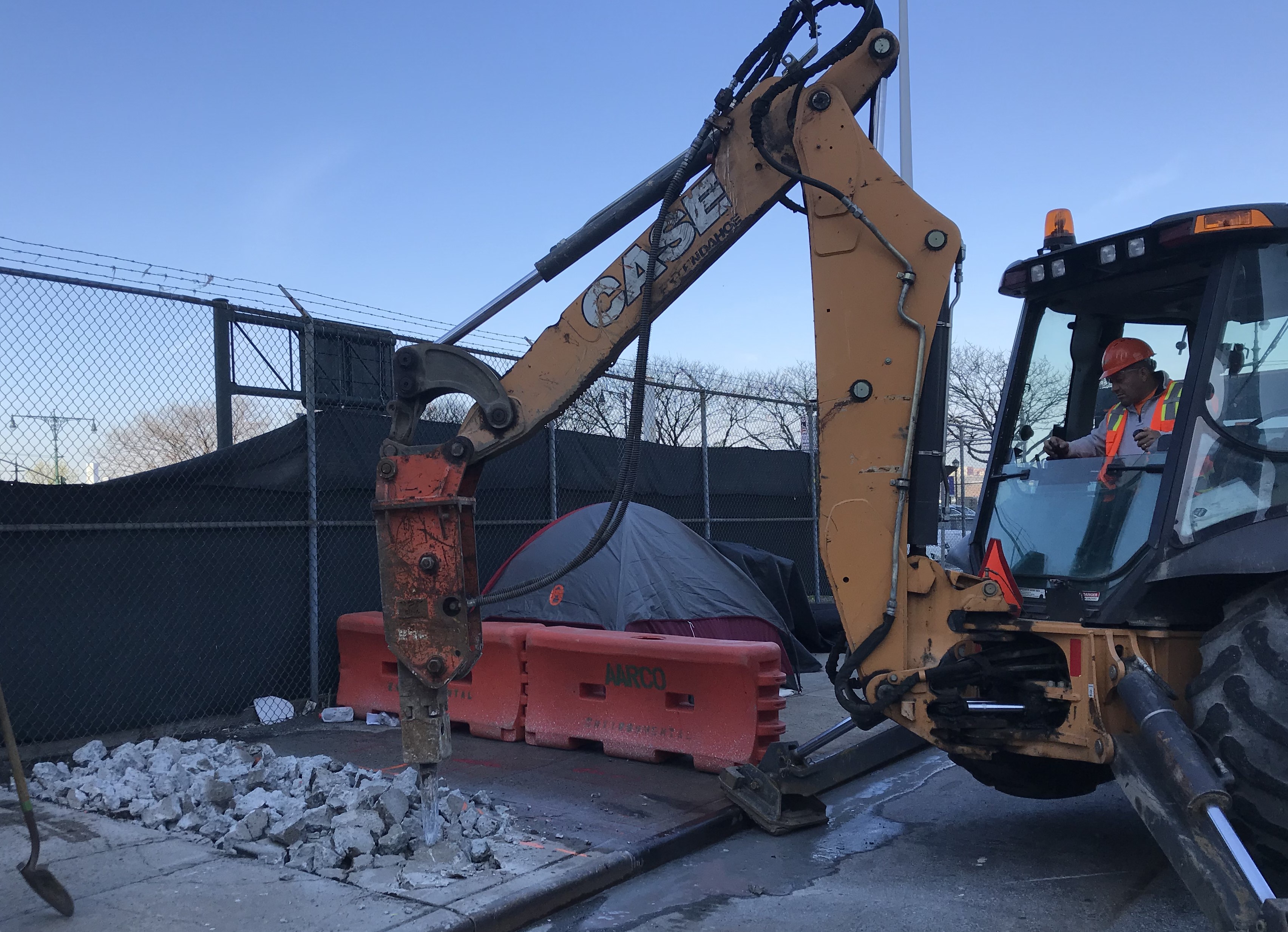
April 2021: Digging “Test Pits” on 30th Street and 12th Avenue in Manhattan, which is the northern boundary of a ventilation shaft for the new tunnel. 
April 2021: Test pits confirm the location of ConEd cables feeding electricity into Manhattan, ensuring future construction of the ventilation shaft does not cut, damage, or otherwise disturb these cables. 
April 2021: Test pits on 30th Street and 12th Avenue in Manhattan. 
April 2021: Test pits on 30th Street and 12th Avenue in Manhattan. 
April 2021: Test pits on 30th Street and 12th Avenue in Manhattan. 
The first two sections of the Hudson Yards Concrete Casing, which will connect the new tunnel into New York Penn Station, were completed in 2018. Here you can see the interior of the box tunnel that runs from underground in the block bordered by 10th and 11th Avenues and 30th and 33rd Streets. Construction of the Hudson Yards Concrete Casing – Section 3, the third and final section, started in November 2023 and will be complete in 2026. 
Inside the completed sections of the Hudson Yards Concrete Casing. 
Inside the completed sections of the Hudson Yards Concrete Casing. 
Early construction on the first two sections of the Hudson Yards Concrete Casing, which will connect the new tunnel into New York Penn Station, was completed in 2018. 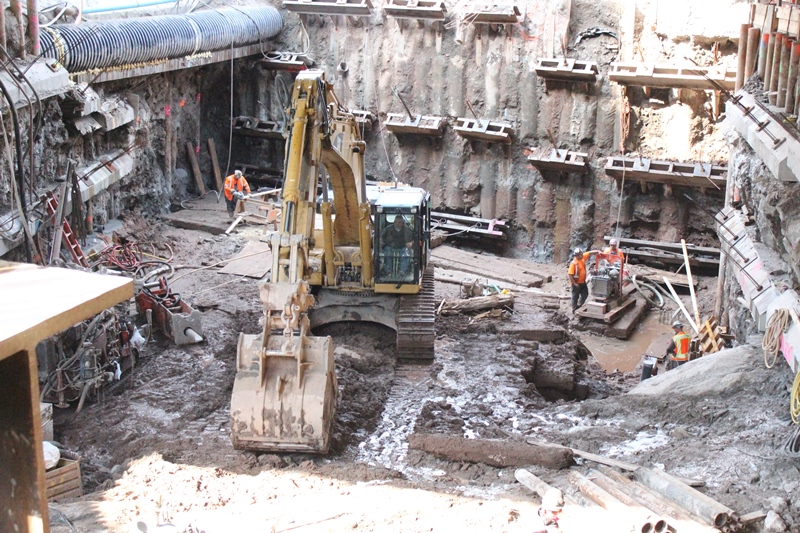
Early construction on the first two sections of the Hudson Yards Concrete Casing. 
Early construction on the first two sections of the Hudson Yards Concrete Casing. 
Early construction on the first two sections of the Hudson Yards Concrete Casing. 
Portal to the North River Tunnel. 
Exposed rebar in the North River Tunnel built in 1910. 
Corrosion in the North River Tunnel accelerated by Superstorm Sandy in 2012. 
Deterioration in the North River Tunnel built in 1910. 
Deterioration in the North River Tunnel built in 1910. 
Deterioration in the North River Tunnel built in 1910. 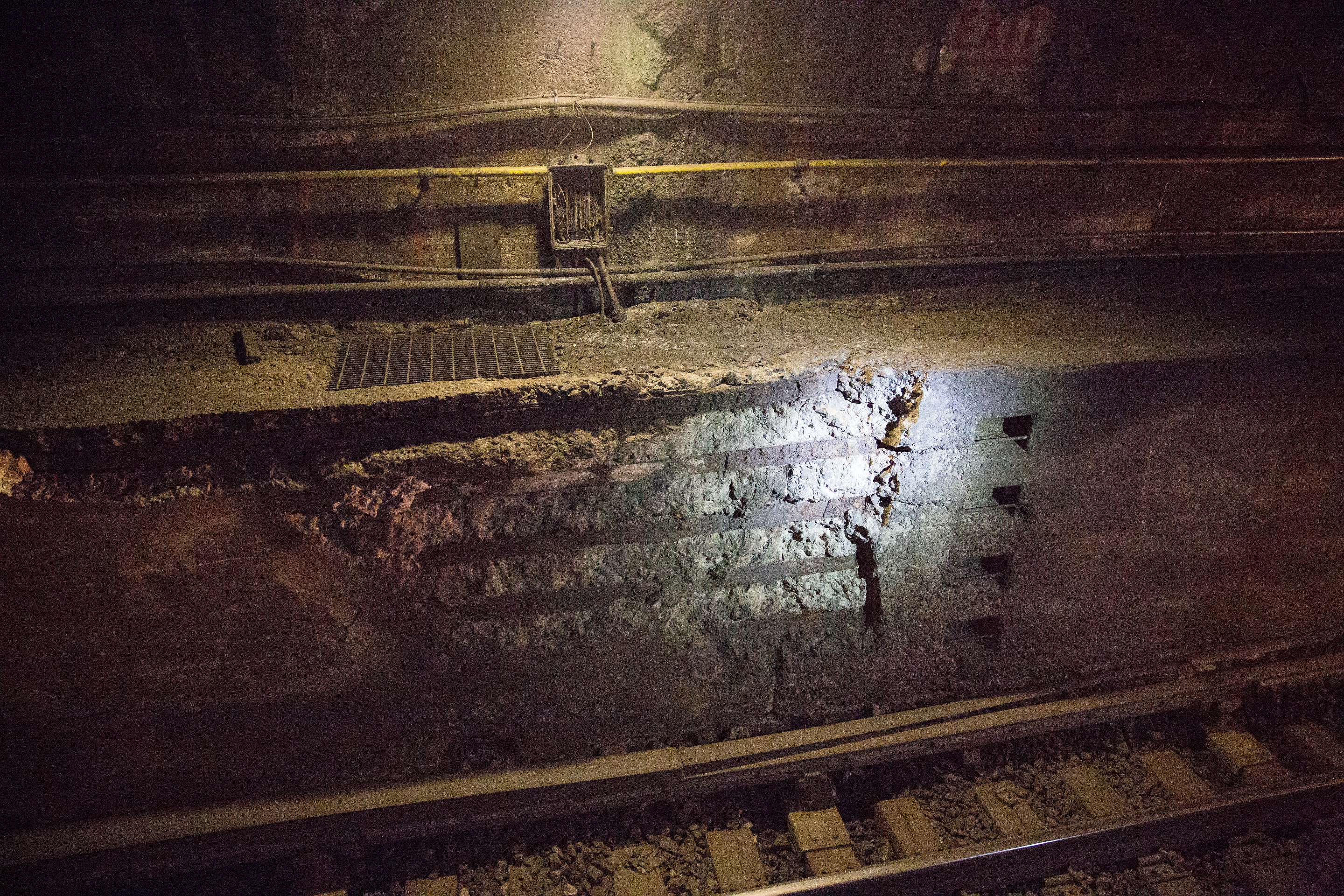
Deterioration in the North River Tunnel built in 1910. 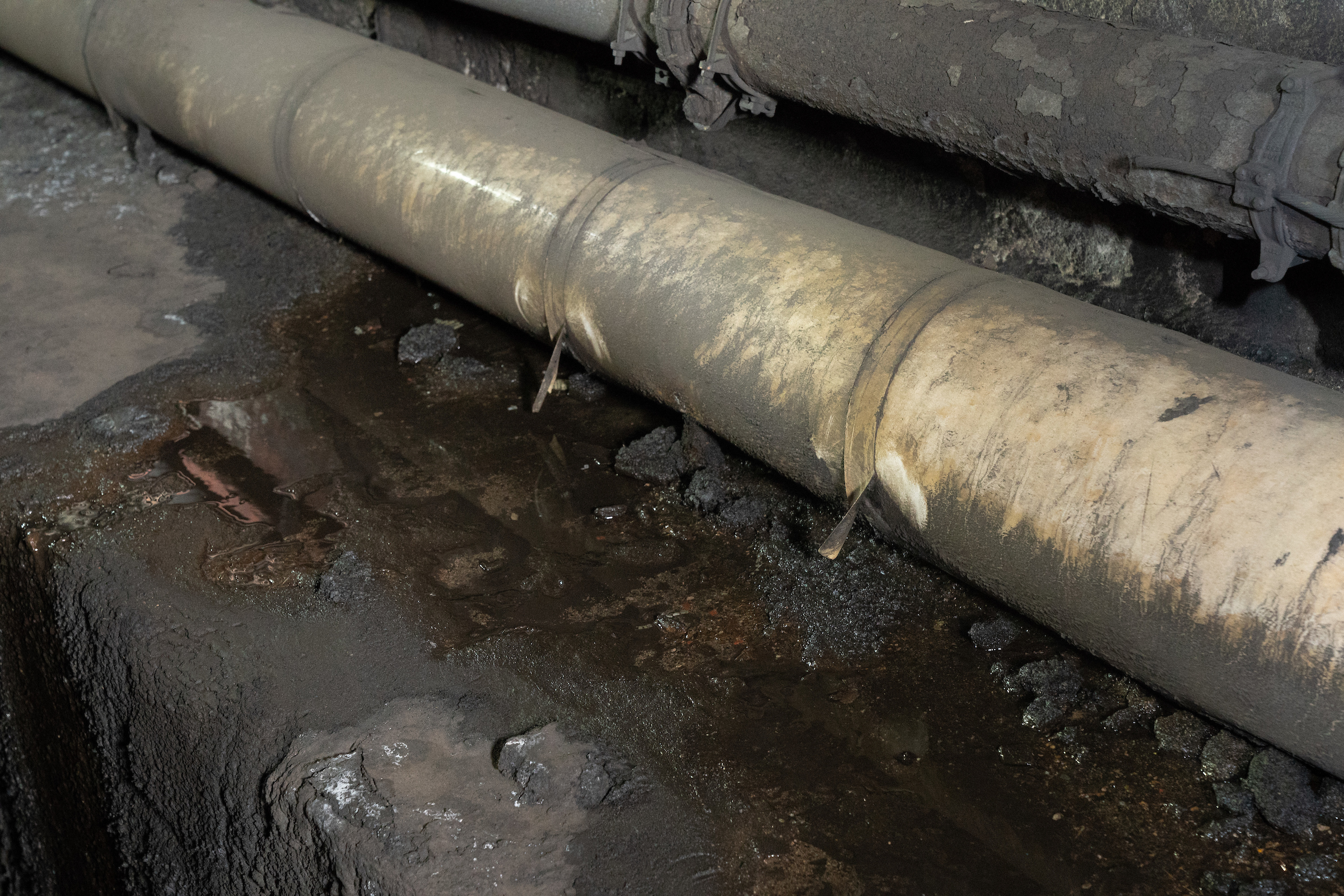
October 2018: Saltwater from Superstorm Sandy corroding the walls that house copper cables and electrical wires in the North River Tunnel. 
October 2018: Electrical cables in the North River Tunnel damaged by Superstorm Sandy in 2012. 
The Portal North Bridge is a swing-span bridge that causes major bottlenecks and delays when it malfunctions during opening and closing for maritime traffic. Here you can see the open bridge. By 2027, it will be replaced with a high-level fixed span bridge. 
October 2018: Early construction work on the Portal North Bridge. Workers are constructing the initial sections of a 222-foot utility “monopole” that will carry high-voltage transmission lines supplying power to Northeast Corridor trains in and out of New York. 
September 2018: Early work on the Portal North Bridge involving the construction of a steel bridge to protect water utilities and move fiber optic cables that supply data to Wall Street.
Photo Gallery
Below are images showing various elements of the Gateway Program. They are available for use by the media and public.
